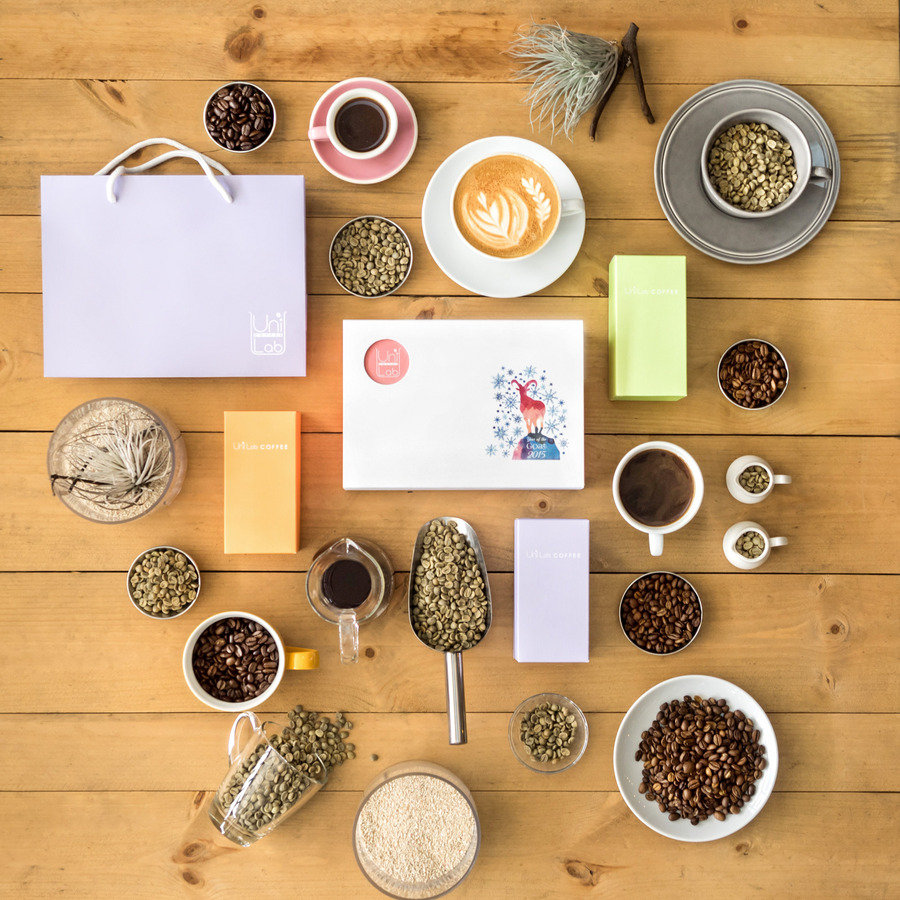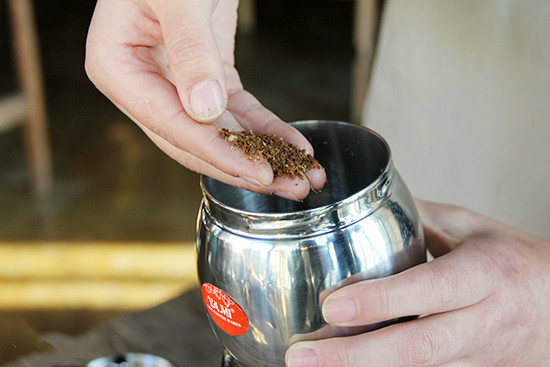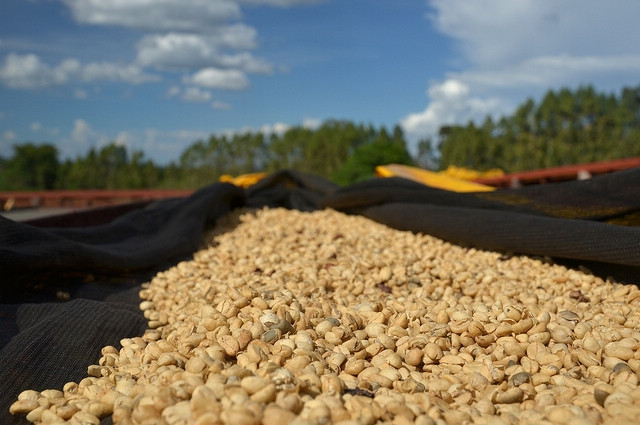Latte the classic mixture of espresso and milk Italian latte caramel latte
Latte is a transliteration of the Italian word Latte, and Coffee Latte is a fancy coffee. Latte coffee is a classic blend of espresso and milk, and Italians also like latte as a breakfast drink. In Italian kitchens in the morning, coffee and milk are usually brewed simultaneously on a sunny stove. Latte drinkers prefer milk to espresso, and only espresso can give plain milk its unforgettable flavor.
This is a story from 1683. This year, the Turkish army attacked Vienna for the second time. When the Poles learned of the offensive and defensive alliance between the Viennese emperor Obod I and the Polish king Augustus II, reinforcements would arrive quickly. But the question was, who would break through the Turkish siege and send a message to the Poles? Kochski, a Viennese who had traveled in Turkey, volunteered to deceive the Turkish army under siege by crossing the Danube and bringing in Polish troops. The Ottoman army, despite its bravery, retreated in panic under the attack of the Polish army and the Viennese army, leaving behind a large number of military supplies outside the city, including 500 bags of coffee beans-coffee beans that the Muslim world had controlled for centuries. But the Viennese didn't know what it was. Only Kochsky knew it was a magical drink. So he asked for the 500 bags as a reward for breaking out and using them to open Vienna's first cafe, the Blue Bottle. At the beginning, the coffee shop business was not good. The reason is that people in Christendom do not like to drink coffee grounds like Muslims do, and they are not used to this dark, bitter drink. So the clever Kochsky changed the recipe, sifting out the grounds and adding lots of milk--an original version of the latte that is now common in coffee shops.
Steps to make latte:
1. Pour coffee beans into a coffee grinder and grind them to a medium fine coffee powder. Put about 7 grams of coffee powder into a brewing wrench and flatten it.
2. After the coffee powder is flattened, gently press it from above with a powder press to make the coffee powder evenly spread in the brewing wrench.
3. Then lift it and press it hard with the powder press until the coffee powder is pressed flat and compacted.
4. Gently screw the brewing wrench onto the coffee maker so that the brewing wrench forms a 90 degree angle with the coffee maker level, and then press the brewing button for approximately 18 to 30 seconds from the moment the button is pressed to obtain approximately 1 ounce of espresso.
5. Pour cold Nestle whole milk into stainless steel milk about 5 minutes full.
6. Open the steam pipe of the coffee machine and spray it empty. After clearing the hot water left in the pipe, you can beat milk. The most front end of the steam pipe into the milk 1/3, and slowly open the steam, then slowly tilt the milk steel down to find the point where the milk can form a vortex, then issue a "Chi Chi" sound, indicating that milk bubbles are forming.
7. Wait until the milk temperature reaches 65 degrees or so when the milk is ready, and finally turn off the steam pipe.
8. Pour the beaten milk slowly into a latte cup and cover it with a thick layer of foam.
9. Slowly pour the pre-made espresso from the center of the cup into the latte to form layers.
10. After the coffee has been poured, a latte is made by covering it with a thin layer of foam.
Latte coffee can be made by adding milk in different ways. Here are four common coffee varieties:
Italian latte
Italian latte requires a small espresso and a glass of milk, and latte coffee has more milk and less coffee. Latte coffee is extremely simple to make, just pour the milk into the freshly made espresso. In fact, there is no fixed amount of milk added, and it can be freely mixed according to personal taste.
American latte
If you add some frothy cold milk to the hot milk, you get an American latte. Starbucks 'American latte is made this way: espresso at the bottom, milk heated to 65 to 75 degrees Celsius in the middle, and a layer of cold milk foam no more than half a centimeter at the end.
Iced latte
Iced latte coffee uses fructose and milk to increase the proportion of milk, so that it will not mix with lighter coffee, and become a black and white two-layer, forming a beautiful visual effect like a cocktail, coupled with ice cubes, giving people an elegant and romantic warm feeling.
Pour hot milk, espresso foam into the cup in order to create a layered effect. Generally speaking, espresso is the base. Then pour in hot fresh milk, milk foam is easier to make, can use a spoon to help pour.
Caramel latte
Latte coffee can be added to a variety of flavored fruit juice to change the taste. Such as caramel, hazelnut, French vanilla and so on. Add 15 ml of flavored fruit juice to the cup first, then add the ingredients according to the above steps.
If you add 15 ml of caramel sauce, it becomes caramel latte.

Important Notice :
前街咖啡 FrontStreet Coffee has moved to new addredd:
FrontStreet Coffee Address: 315,Donghua East Road,GuangZhou
Tel:020 38364473
- Prev

How to use mocha pot to make boutique coffee?
The mocha pot is divided into three parts: the upper seat, the powder trough, and the lower seat. The lower seat is a sink for holding water, and the powder trough is used to hold finely ground coffee powder. The upper seat is to hold the extracted coffee liquid. When brewing, the water is placed in the lower pot and the coffee is placed in the middle of the net. when the pot is heated, it produces steam and rushes the hot water up. Pass through the coffee powder, then into the pot to form coffee. Because
- Next

China Coffee Network recommends American boutique coffee beans Coffee Raw Bean treatment introduction Solar selection of beans
Sun treatment will first identify sunken beans in the sink, that is, ripe or half-ripe beans are spread in the drying farm for natural drying. The specific time depends on the local climatic conditions, which usually takes two to four weeks. When the moisture of the coffee bean is reduced to 12%, then use a sheller to grind off the hard pulp and silver skin. The requirement of the sun treatment on the climate is very high.
Related
- Does Rose Summer choose Blue, Green or Red? Detailed explanation of Rose Summer Coffee plots and Classification in Panamanian Jade Manor
- What is the difference between the origin, producing area, processing plant, cooperative and manor of coffee beans?
- How fine does the espresso powder fit? how to grind the espresso?
- Sca coffee roasting degree color card coffee roasting degree 8 roasting color values what do you mean?
- The practice of lattes: how to make lattes at home
- Introduction to Indonesian Fine Coffee beans-- Java Coffee producing area of Indonesian Arabica Coffee
- How much will the flavor of light and medium roasted rose summer be expressed? What baking level is rose summer suitable for?
- Introduction to the characteristics of washing, sun-drying or wet-planing coffee commonly used in Mantenin, Indonesia
- Price characteristics of Arabica Coffee Bean Starbucks introduction to Manning Coffee Bean Taste producing area Variety Manor
- What is the authentic Yega flavor? What are the flavor characteristics of the really excellent Yejasuffi coffee beans?

